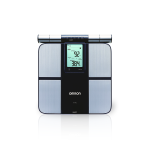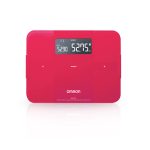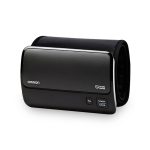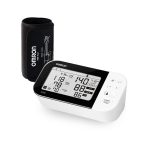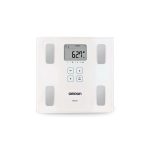The Role of Regular Blood Pressure Checks in Managing Hypertension
May 14, 2025 2025-05-14 12:42The Role of Regular Blood Pressure Checks in Managing Hypertension
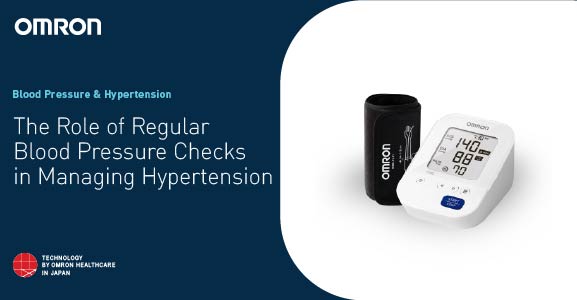
The Role of Regular Blood Pressure Checks in Managing Hypertension
Hypertension—often called the “silent killer”—can quietly damage your heart, kidneys, and brain long before symptoms appear. Left unchecked, it significantly increases the risk of heart attacks, strokes, and other life-threatening conditions. That’s why regular blood pressure monitoring isn’t just smart—it’s life-saving. With a reliable BP machine at home, you can detect dangerous spikes early, stay informed about your health, and take timely action to keep your blood pressure under control. Proactive monitoring empowers you to manage hypertension before it manages you.
Why Regular Blood Pressure Monitoring is Essential
Blood pressure fluctuation throughout the day might happen due to factors such as stress, diet, and physical activity. While occasional high readings are common, persistent hypertension might lead to severe complications such as heart disease, stroke, and kidney failure. Regular checks using a BP monitor machine enable individuals to:
- Track Trends: Identify the patterns and fluctuations in the levels of blood pressure.
- Early Detection: know abnormal readings before they escalate into critical conditions.
- Informed Decisions: Provide accurate data to healthcare professionals for better treatment plans.
Benefits of Home Monitoring
Using a blood pressure machine for home use offers several advantages:
- Convenience and Accessibility: Monitoring blood pressure at home reduces the need for frequent clinic visits, saving time and effort.
- Early Intervention: With a BP test machine, individuals can detect high blood pressure early and take preventive measures.
- Accurate Readings: Home monitoring reduces the risk of “white coat hypertension,” where anxiety in clinical settings causes elevated readings.
- Better Compliance: Regular checkups encourage adherence to prescribed medications and lifestyle modifications.
Choosing the Right Blood Pressure Monitoring Device
Choosing the right blood pressure monitor goes beyond convenience—it’s about accuracy and clinical reliability. Always opt for a medically validated device, tested and certified by global standards such as the ESH (European Society of Hypertension), AAMI (Association for the Advancement of Medical Instrumentation), or BHS (British Hypertension Society). These validations ensure the device provides accurate readings comparable to professional equipment used in clinical settings. Using a non-validated machine can lead to misleading results, potentially delaying crucial treatment. For trustworthy, long-term monitoring and better health decisions, a medically validated BP monitor is the safest and smartest choice.
- Type of Device: Options include manual, semi-automatic, and automatic bp machines. Automatic devices are user-friendly and apt for home use.
- Cuff Size: Ensure the cuff fits your arm correctly for accurate reading.
- Accuracy and Validation: Choose a device validated by medical authorities for reliability.
- Ease of Use: Look for features like digital displays, memory storage, and one-touch operation.
Best Practices for Blood Pressure Monitoring
For consistent and accurate readings, follow these steps while using your BP monitor machine:
- Prepare Properly: Avoid caffeine, exercise, and smoking for at least 30 minutes before measuring.
- Sit Comfortably: Sit with your back straight, feet flat on the floor, and support your arm at heart level.
- Use the Same Arm: Always measure on the same arm for consistency.
- Take Multiple Readings: Record two or three readings, a minute apart, and average them for accuracy.
- Log Your Results: Maintain a record of your readings to share with your healthcare provider.
Lifestyle Modifications to Manage Hypertension
While regular monitoring with a blood pressure machine is crucial, lifestyle changes significantly contribute to managing hypertension. Key modifications include:
- Healthy Diet: adopt a diet rich in fruits, veggies, whole grains, and low-fat dairy while reducing sodium and saturated fats.
- Regular Exercise: Make time for at least 30 minutes of moderate exercise most days of the week.
- Stress Management: Plan relaxation techniques like meditation, yoga, or deep breathing.
- Weight Management: Try to keep up a healthy weight to help reduce pressure on the arteries.
- Limit Alcohol and Quit Smoking: These habits exacerbate hypertension and should be controlled or eliminated.
The Role of Healthcare Professionals
While home monitoring with a BP test machine is effective, regular consultations with healthcare providers remain essential. Doctors can interpret readings, adjust medications, and recommend additional diagnostic tests if needed. Combining professional guidance with the regular use of a blood pressure machine for home use ensures comprehensive hypertension management.
The Future of Blood Pressure Monitoring
Advancements in technology have made blood pressure monitoring easily accessible and efficient. Modern automatic BP machines come equipped with features like Bluetooth connectivity, app integration, and real-time alerts, enabling seamless tracking and sharing of data with healthcare providers. These innovations empower individuals to take proactive steps in managing their hypertension.
Conclusion
Hypertension is a manageable condition, but it needs consistent effort and vigilance. Regular monitoring with a reliable blood pressure checking machine not only aids in early detection but also provides the data needed to make informed lifestyle and treatment decisions. Combined with healthy habits and medical guidance, home monitoring is a cornerstone of effective hypertension management.

